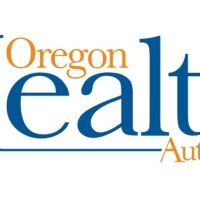
The number of people who are ordered to receive competency restoration services either at Oregon State Hospital (OSH) or through a Community Mental Health Program (CMHP) has been building towards crisis levels for years in Oregon. Many of the individuals are living with a wide range of behavioral health and social service needs that extend across multiple systems.
To better characterize this need and opportunities for improvement, Oregon Health Authority (OHA) contracted with Program Design and Evaluation Services (PDES) in 2021 to build an overall picture of Oregon’s competency restoration system and population. In the final report, researchers highlight three key themes:
Legal community and clinical teams may have different definitions and measurements of competency restoration.
- Competency restoration is a court‐based process yet the sectors responsible for implementation are behavioral health and human service providers who approach restoration using a very different lens than judges and District Attorneys. They may not be using shared language or viewing competency restoration in the same way.
Access to adequate restoration services varies across the state.
- Some counties have more extensive service delivery infrastructure and programming, leaving them better prepared to address community restoration, though even these counties are overburdened and understaffed.
There is a lack of data transparency and information sharing across sectors.
- One of the largest barriers to monitoring and assessing Oregon’s competency restoration process is a separation of data systems between the different agencies and organizations.
“If we are going to make a true impact on the lives of those placed under aid and assist orders, we must have all parties agree on treatment, measurements and definitions,” said David Baden, Deputy Director for Policy and Program for OHA. “To reach a common goal we need to speak the same language and we need to share information. We cannot continue to allow citizens of Oregon to get lost in the system because we are not communicating well. ”
Opportunities
The PDES report concluded with concrete opportunities for state and local systems to improve competency restoration. OHA is already pursuing and implementing many of them:
Use a cross‐sector, multi‐faceted approach
- OHA, OSH, and Oregon Department of Disability Services (ODDS) have established a cross-agency workgroup to identify improvements for timely discharge from OSH and diversion for individuals with Intellectual and Developmental Disabilities (IDD) and improve access to IDD services for individuals in competency restoration.
Support implementation of competency restoration with materials and technical assistance
- OHA is developing a Community Restoration Program Manual to define best practices and protocols.
Address workforce capacity, development, and training
- OHA is piloting a mentorship program that is intended to support opportunities for employees as part of their professional development.
Improve data systems and information sharing
- OHA’s Intensive Service Unit is working in collaboration with Health Policy and Analytics and Community Outcome Management and Performance Accountability Support System (COMPASS) teams to develop more timely reporting on community restoration data.
- OHA’s Intensive Service Unit and OSH are working with the COMPASS team to incorporate Oregon Judicial Department data into the Behavioral Health Data Warehouse.
OHA will continue to review the report to identify additional system improvements we can make to Oregon’s continuum of behavioral health care.















